On the morning of August 26th, 2020, sports fans thought they had seen everything. But as they tuned in to watch Game 5 of the NBA playoff series between the Orlando Magic and Milwaukee Bucks they realized the 2020 season had one last twist in store. On screen, viewers saw only one team warming up while the other side of the court remained completely empty. A few minutes later, Adrian Wojnarowski dropped a patented “woj-bomb,” reporting that the Milwaukee Bucks were protesting Game 5 following the police shooting of Jacob Blake. Shortly after learning what the Bucks had decided, the Magic joined the protest, and the remaining teams in the NBA followed shortly thereafter, each deciding not to play for the next two days. Ultimately, the teams decided to continue the season to avoid triggering a violation of the league’s Collective Bargaining Agreement (CBA). In order to understand what effects a refusal by players to finish the season would have had, it is important to determine whether the protest was a boycott or a strike. A strike within the legal world is defined as “an organized work stoppage by employees, intended to pressure the employer to meet the employees’ demands.” What distinguishes this situation from an ordinary strike is that the players didn’t have any demands the owners could fulfill. Whereas previous player strikes were caused by disagreements over how much money owners should pay the players and took place with the consent and partnership with the Players Association, here, the Players Association was forced into the position of trying to prevent the players from refusing to play. Had the players decided to extend their protest, the Players Association would have been forced to walk a tightrope between their obligations to both oppose the action and to protect its players and their decision making as well.

While this may not have been a strike in the classic sense, it might be classified as a “wildcat strike.” The term wildcat strike, as explained by Professor at the University of Southern California, refers to unauthorized work stoppages without the vote of the union (in this case the Players Association). This may be a more apt description as the protest seems to have been started unilaterally by the Bucks and not as a union-wide position. If the strike had continued causing the rest of the postseason to be canceled, it would have painted the Players Association into a corner.
In terms of broader impacts beyond the effects on the relationship between the association and team owners and the players, there were a few notable consequences. When the league restarted after the break due to Covid-19, players agreed to take a pay cut should they refuse to play without a cause. According to the Collective Bargaining Agreement, under non-Covid-19 circumstances, players would not have earned their playoff game payment (in essence a bonus payment earned from concession and advertising revenue)for games missed due to a strike. Additionally, the team owners may still choose to sue the players for any money lost due to the strike, but that is just speculation at this time. Another factor to be considered is that a year would elapse on each player’s contract, which benefits some players and hurts others.
The two most recent strikes by athletes against leagues were in the National Hockey League and the National Basketball Association. In 2004, the NHL owners engaged in a lockout which resulted in the entire 2004 season being canceled. No players were paid, and a year elapsed on their current contract term. The 1998 NBA lockout resulted in the season being shortened from 82 to 50 games, and the all-star game was cancelled. Beyond the effects on the players and team owners, both strikes led to negative reactions by fans.
The 2004 NHL lockout was caused by a conflict between players and coaches over the NHL’s salary cap. After tense negotiation, the season was canceled on February 26th, at what would’ve been the halfway mark. Although this usually is described as a lockout, it also certainly fits our description of a strike, as the players were demanding more money than the owners were offering. After months of negotiation the dispute between owners and players ended on July 23rd, 2005. The detrimental effects teams faced were mostly short lived with owners seemingly have won the negotiations. However, billions were lost in TV revenue, attendance, and sponsorships. The 1998 NBA strike also centered around the owners’ insistence on changing the salary cap and refusing raises to players. Unlike the NHL lockout, the NBA was eventually able to save the season and play a shortened season. From a legal perspective, it seemed that this was a rather pedestrian negotiation and didn’t carry much legal significance moving forward.

… [Trackback]
[…] There you can find 9326 more Info on that Topic: jipel.law.nyu.edu/effects-of-an-nba-post-season-strike-on-the-cba/ […]
… [Trackback]
[…] Find More on on that Topic: jipel.law.nyu.edu/effects-of-an-nba-post-season-strike-on-the-cba/ […]
… [Trackback]
[…] There you will find 17348 additional Information to that Topic: jipel.law.nyu.edu/effects-of-an-nba-post-season-strike-on-the-cba/ […]
… [Trackback]
[…] Information on that Topic: jipel.law.nyu.edu/effects-of-an-nba-post-season-strike-on-the-cba/ […]
… [Trackback]
[…] Here you can find 95686 additional Info on that Topic: jipel.law.nyu.edu/effects-of-an-nba-post-season-strike-on-the-cba/ […]
… [Trackback]
[…] Find More here to that Topic: jipel.law.nyu.edu/effects-of-an-nba-post-season-strike-on-the-cba/ […]
… [Trackback]
[…] Find More on that Topic: jipel.law.nyu.edu/effects-of-an-nba-post-season-strike-on-the-cba/ […]
… [Trackback]
[…] Information to that Topic: jipel.law.nyu.edu/effects-of-an-nba-post-season-strike-on-the-cba/ […]
… [Trackback]
[…] Here you will find 83318 more Information to that Topic: jipel.law.nyu.edu/effects-of-an-nba-post-season-strike-on-the-cba/ […]
… [Trackback]
[…] Find More Info here on that Topic: jipel.law.nyu.edu/effects-of-an-nba-post-season-strike-on-the-cba/ […]
… [Trackback]
[…] Read More here to that Topic: jipel.law.nyu.edu/effects-of-an-nba-post-season-strike-on-the-cba/ […]
… [Trackback]
[…] Find More to that Topic: jipel.law.nyu.edu/effects-of-an-nba-post-season-strike-on-the-cba/ […]
… [Trackback]
[…] Information on that Topic: jipel.law.nyu.edu/effects-of-an-nba-post-season-strike-on-the-cba/ […]
… [Trackback]
[…] Find More on that Topic: jipel.law.nyu.edu/effects-of-an-nba-post-season-strike-on-the-cba/ […]